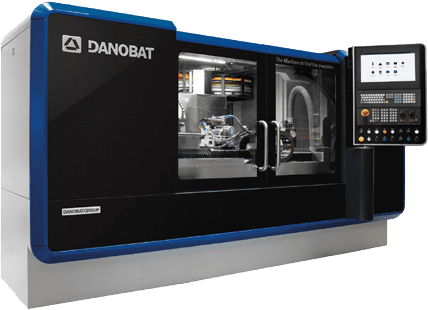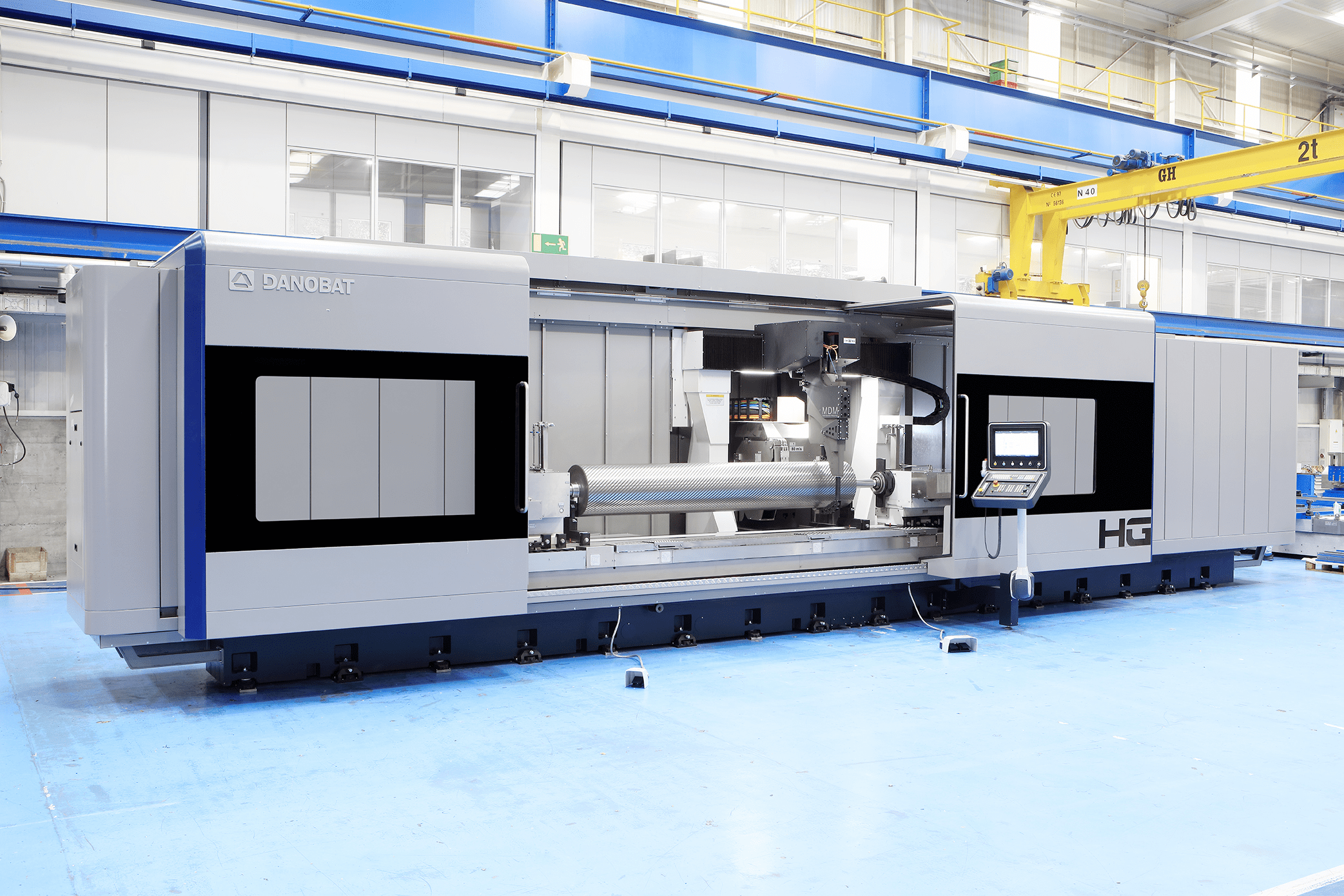Carbide machining:
Hembrug Breaks the Rules
Category
Finish Hard Turning & Grinding
Year
2025
Article Credit: Danobat
Tungsten carbide tooling is widely used in the mould and die industry for punching, drawing, and extrusion applications.
This tooling is known for its wear resistance and complex contours, which require the highest standards of form and surface finish. Traditionally, these workpieces have been finished using grinding machines due to their difficult machinability.
Good news: A flexible manufacturing process for finishing carbide tooling is now possible with the combined effect of a dynamically stiff and accurate turning machine.
High-precision turning is a very flexible process. It’s easy to set up and change over, achieving high metal removal rates. The greatest advantage is the ease with which complex contours can be programmed and machined.
A High Precision Hard Turning Machine is a Must
Optimal machine and tooling are key to successfully turning tungsten carbide to the same accuracy as grinding. Often referred to as “hard metal” due to its very high hardness, tungsten carbide can have a hardness value of 80 Rockwell C. In comparison, the hardness of hardened steel is typically in the range of 58 to 64 Rockwell C.
Turning this material on a conventional precision lathe will result in high vibrations due to minimal machine damping characteristics. The elevated cutting forces required to remove material from the workpiece are higher in tungsten carbide than in hardened steel. These higher cutting forces result in significant pushback pressure on the guideways and spindle bearings. Conventional turning machines are not designed to handle these forces, leading to premature wear of the guideways, even in hardened steel, let alone carbide. This results in a drop-off in size holding capability, form accuracies, surface finishes, and increased tool wear.

Hard turning of a carbide draw die on a Hembrug Mikroturn 100 lathe
The Dutch builder Hembrug Machine Tools, part of the Spanish machine tool group Danobat, specializes in the development and construction of high precision hard turning machines. They also have extensive process experience turning ultra-tight tolerance tungsten carbide workpieces where sub-micron accuracy is needed.
This in-house developed technology is applied to both the slide-way and spindle bearings in every Hembrug Mikroturn® machine model. It has proven to be superior to all other slide and spindle systems on the market. It provides superb damping properties along with high dynamic stiffness, independent of speed, necessary to minimize vibrations at the tool tip.
These characteristics are essential for surface finish integrity and extended tool life. The absence of metal-to-metal contact between moving machine elements results in a completely wear-free platform with low operational costs and everlasting accuracy.
With this level of design and construction, together with a natural granite machine base, there’s a higher upfront investment compared to a conventional precision lathe. The benefit is longer tool life, fewer adjustments, consistent piece-to-piece repetitive accuracies due to its inherent stability, and most importantly, workpiece quality on par with grinding tolerances.

The newly designed, fully hydrostatic Hembrug Mikroturn® 100 3rd Generation

Construction of a Hembrug hydrostatic main spindle in a granite housing
Hard Turning and Finishing Combined
Hembrug, owned by Danobat, often leverages Danobat’s expertise in precision grinding to integrate advanced grinding technology into its machines. Depending on the application, it may be beneficial to pre-turn parts, followed by grinding or honing, to achieve the desired surface finish and tolerance requirements. For example, the exclusive “Kombifin-Stone finish option” offered by Hembrug enables surface finishes as fine as Ra 0.02µm.

Stone honing after turning makes surface finishes of Ra 0.02 µm possible
Proof of Precision
Numerous Hembrug Mikroturn® machines are used worldwide for the finishing of carbide forming tools. In a recent application, a 150 mm draw die with a 12% cobalt binder, Hembrug again proved the power of the hard turning process. Hembrug engineers were able to finish-turn this die with a rough cutting depth of 0.2 mm, achieving a total cycle time of 30 minutes. A CVD diamond insert was used, resulting in a tool life of up to 1.55 miles, but with a PCD tool, 2.48 miles was even achieved. The surface finish achieved was 0.2 micron Ra.

This draw die was made within 30 minutes compared to the old grinding process of 8 hours with similar accuracy results.
Having a flexible machining method, such as hard turning, can produce high-quality carbide tools to grinding quality. Complex contours are easier to make, and in small batch production, hard turning is tough to beat!







